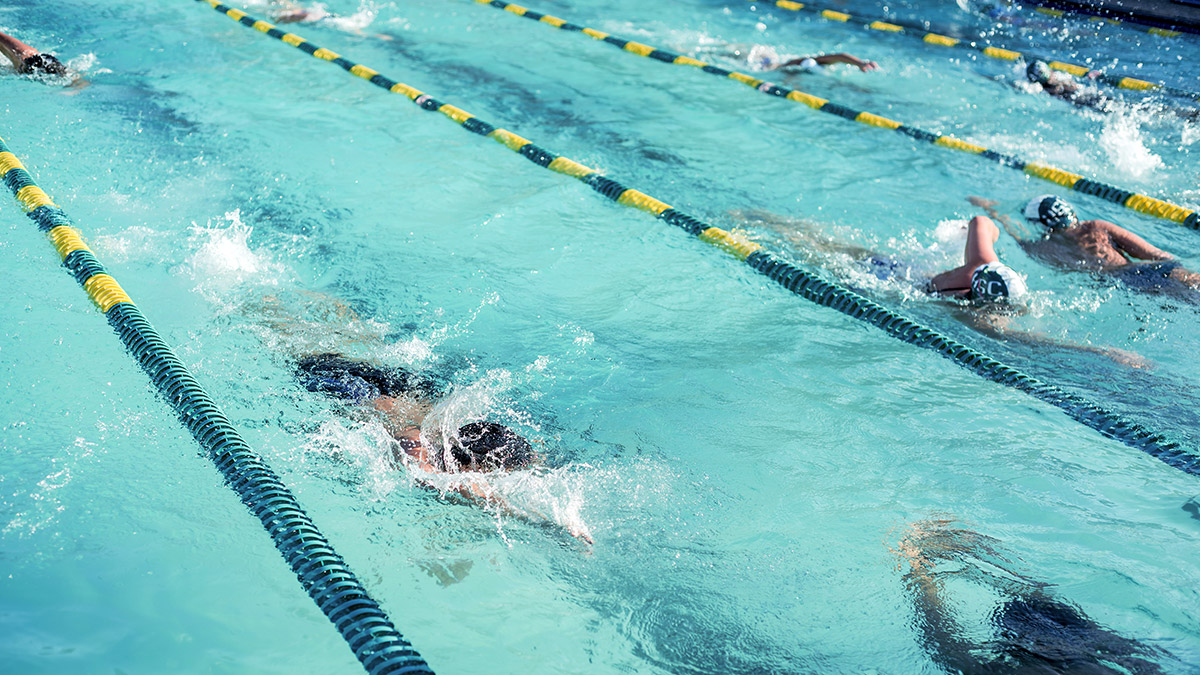When it comes to swimming, some of us love it, while some of us aren’t
Mix it Up
While there are pros and cons to swimming with a group (club, masters, or coach-led session) versus swimming on your own, I am a firm believer that the swimmers who progress the most are those who do a mix of both. On your solo sessions you can focus on your technique and pace, and in a group setting, you’ll typically push yourself more to keep up with or get away from your nemesis.
Have a plan
Don’t just head down to the pool and make your workout up as you go – you will most likely just spend a lot of time chatting at the wall. Get your coach to outline a specific swim set and either write it down or print it out (small plug: all of the sets in my training plans come with an easy-downloadable, print-friendly option).
Once on paper, see below for a cool trick I use to make sure I don’t have to think too much during a set (I’m not great at multitasking!).
Step 1: Bring your session details with you.
Step 2: Dip gently in the water.
Step 3: Paper now easily sticks to a pool lane board for ease of view and reference.
Keep Track of Your Laps
Personally, my biggest problem while swimming is my wandering mind. This usually results in a mild panic mid-set about where I am in the workout. To keep myself on track, I have invented the pool abacus (patent pending) – all you need are two pieces of swim kit (paddles work best) and a pool grill. See below:
Step 1: Pack your trusty swim gear
Step 2: Line up swim grills at start.
Step 3: Use rungs to keep count (e.g. the pic above would show 3 x 100s completed)
Know Your Pool Etiquette
This applies equally to swimming in a group or swimming by yourself, and includes simple rules such as placing yourself in the correct lane based on your pace/ability, giving people space, and drafting correctly. If not adhered to, you might find yourself holding up another swimmer or slapping their toes off. More importantly, you will end up swimming at the wrong pace (either too fast or too slow), which reduces the benefit of your session.
Use Your Resources Wisely
When swimming in a coached or masters session, make sure you ask questions. Politely ask the coach what he or she thinks is your biggest limiter before the session. This should allow them to take note of your stroke and give feedback after the session is over. Once you have that issue prioritized, get drills to fix it and build them into your warm-up sessions. In a few weeks, once you feel on top of your “limiter,” ask your coach to review and hopefully help you move on and fix your next issue. Rinse and repeat — there will always be something to fix!
Remember to Cool Down
Even if you’re crunched for time, you need to cool down correctly. For swimming, this is not only about getting your HR down — it’s vital to ensure you do some backstroke or breaststroke (if you don’t know how to, take time/lessons to learn) to ensure you are not overloading your freestyle muscles.


